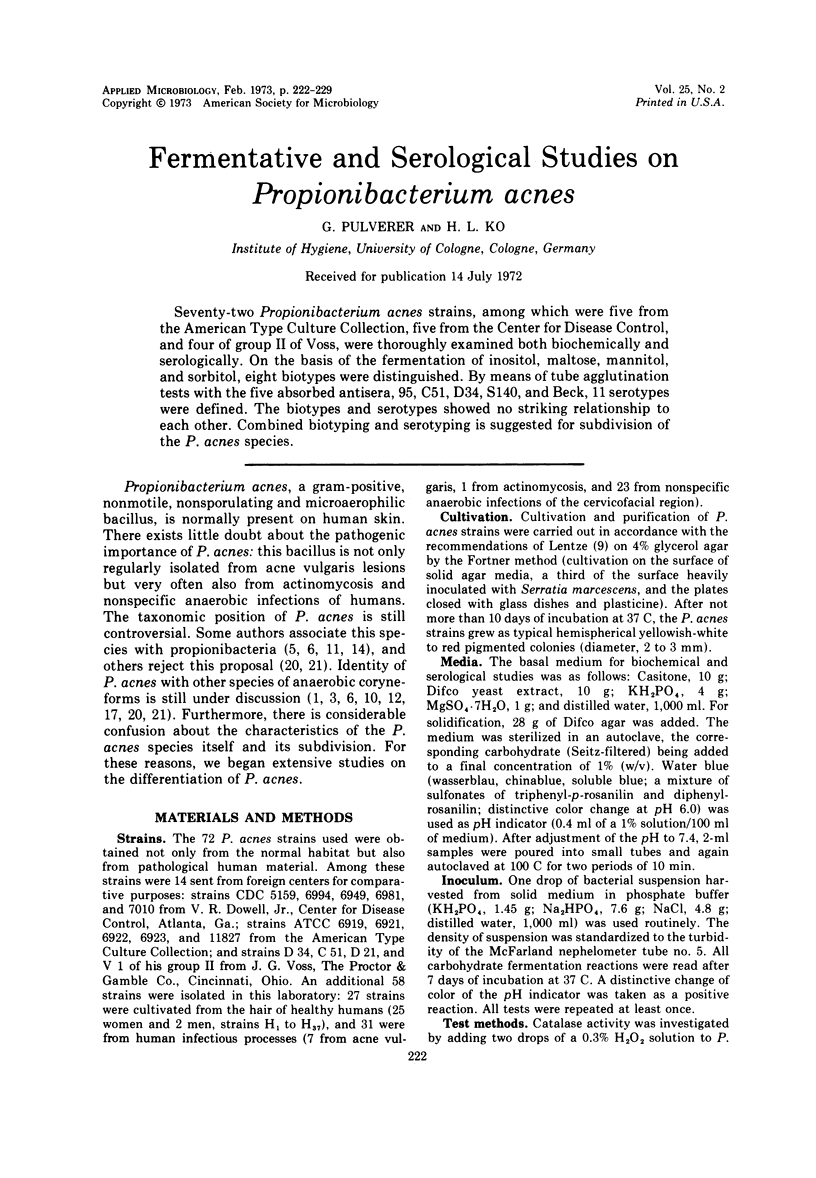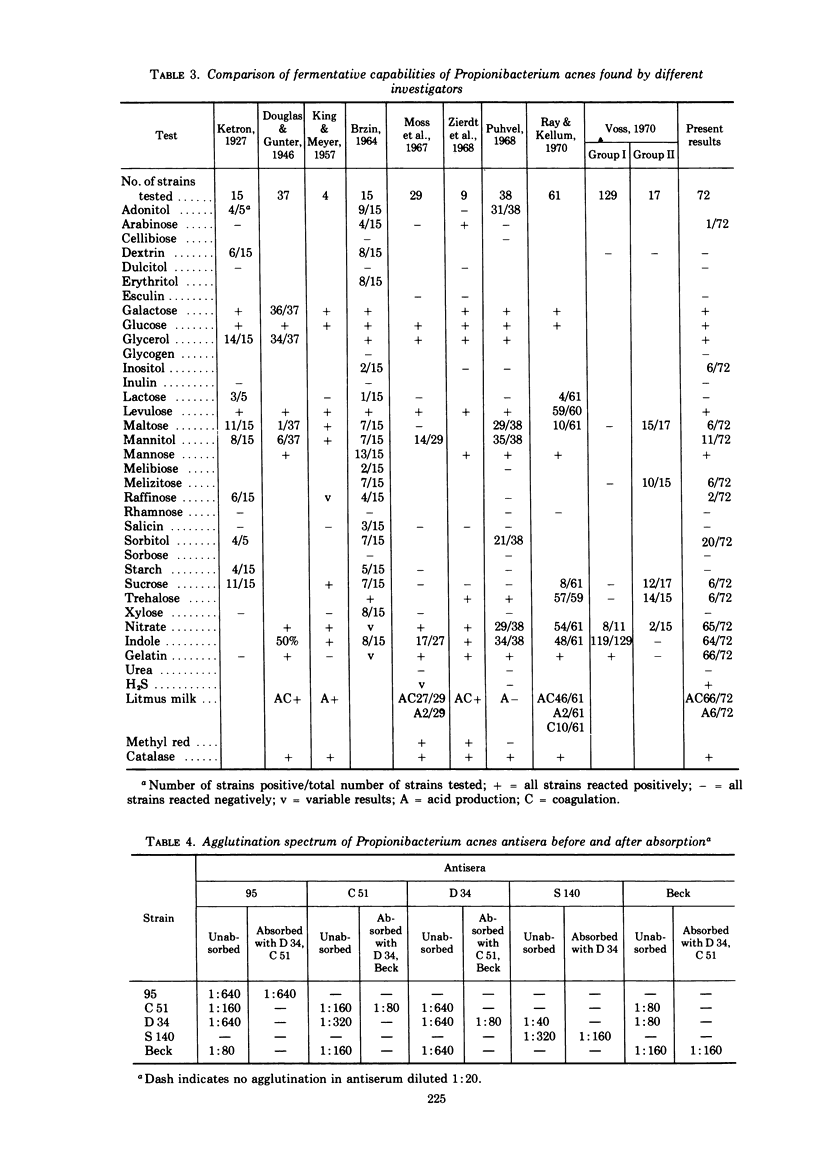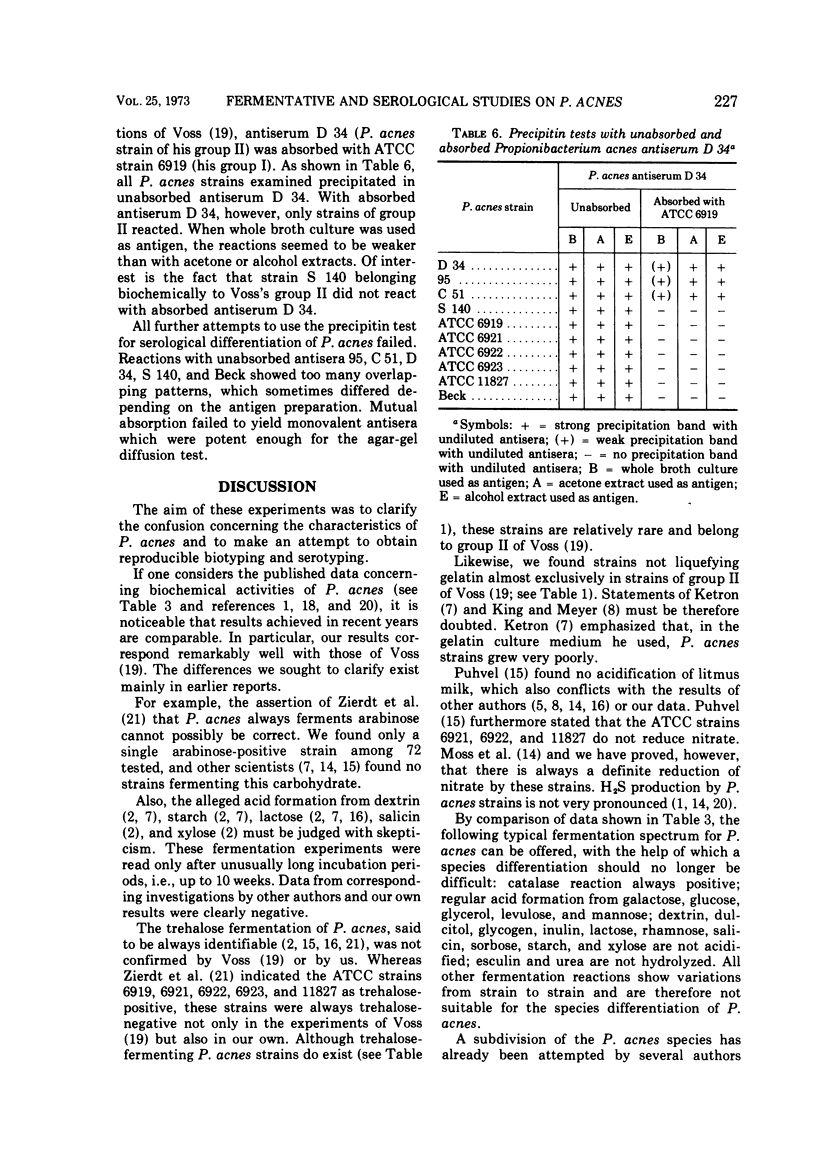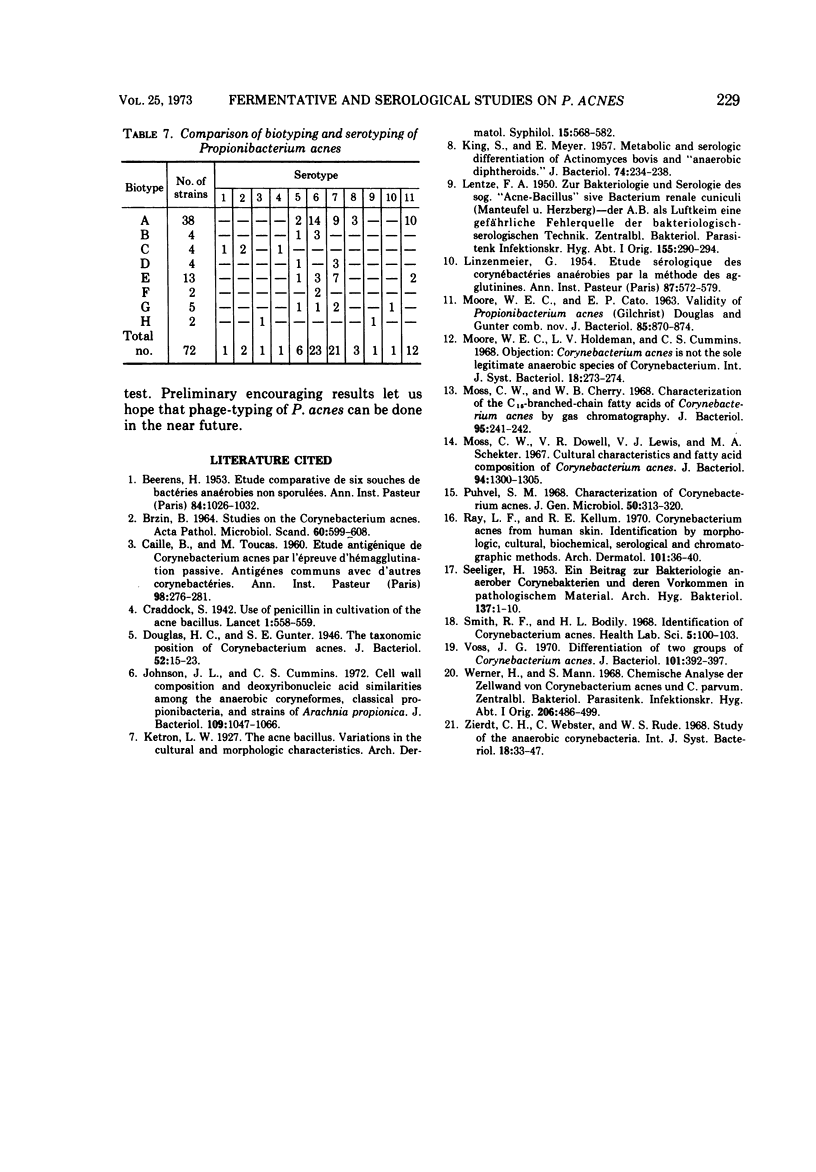Abstract
Seventy-two Propionibacterium acnes strains, among which were five from the American Type Culture Collection, five from the Center for Disease Control, and four of group II of Voss, were thoroughly examined both biochemically and serologically. On the basis of the fermentation of inositol, maltose, mannitol, and sorbitol, eight biotypes were distinguished. By means of tube agglutination tests with the five absorbed antisera, 95, C51, D34, S140, and Beck, 11 serotypes were defined. The biotypes and serotypes showed no striking relationship to each other. Combined biotyping and serotyping is suggested for subdivision of the P. acnes species.
Full text
PDF







Selected References
These references are in PubMed. This may not be the complete list of references from this article.
- BEERENS H. Etude comparative de six souches de bactéries anaérobies non sporulées: Actinomyces bovis A.T.C.C 8373 (bovine), A. bovis A.T.C.C. 8374 (humaine), A. israeli var. liquefaciens, Corynebacterium acnes, Corynebacterium avidum, Corynebacterium liquefaciens. Ann Inst Pasteur (Paris) 1953 Jun;84(6):1026–1032. [PubMed] [Google Scholar]
- BRZIN B. STUDIES ON THE CORYNEBACTERIUM ACNES. Acta Pathol Microbiol Scand. 1964;60:599–608. doi: 10.1111/apm.1964.60.4.599. [DOI] [PubMed] [Google Scholar]
- CAILLE B., TOUCAS M. [Antigenic study of Corynebacterium acnes by the passive hemagglutination test. Antigens in common with other Corynebacteria]. Ann Inst Pasteur (Paris) 1960 Feb;98:276–281. [PubMed] [Google Scholar]
- Douglas H. C., Gunter S. E. The Taxonomic Position of Corynebacterium acnes. J Bacteriol. 1946 Jul;52(1):15–23. [PMC free article] [PubMed] [Google Scholar]
- Johnson J. L., Cummins C. S. Cell wall composition and deoxyribonucleic acid similarities among the anaerobic coryneforms, classical propionibacteria, and strains of Arachnia propionica. J Bacteriol. 1972 Mar;109(3):1047–1066. doi: 10.1128/jb.109.3.1047-1066.1972. [DOI] [PMC free article] [PubMed] [Google Scholar]
- KING S., MEYER E. Metabolic and serologic differentiation of Actinomyces bovis and anaerobic diphtheroids. J Bacteriol. 1957 Aug;74(2):234–238. doi: 10.1128/jb.74.2.234-238.1957. [DOI] [PMC free article] [PubMed] [Google Scholar]
- LENTZE F. A. Zur Bakteriologie und Serologie des sog. "Acne-Bacillus" sive Bacterium renale cuniculi (Manteufel u. Herzberg); der A.B. als Luftkeim eine gefährliche Fehlerquelle der bakteriologisch- serologischen Technik. Zentralbl Bakteriol Orig. 1950 May 25;155(5-7):290–294. [PubMed] [Google Scholar]
- LINZENMEIER G. Etude sérologique des corynébactéries anaérobies par la methode des agglutinines. Ann Inst Pasteur (Paris) 1954 Nov;87(5):572–579. [PubMed] [Google Scholar]
- MOORE W. E., CATO E. P. VALIDITY OF PROPIONIBACTERIUM ACNES (GILCHRIST) DOUGLAS AND GUNTER COMB. NOV. J Bacteriol. 1963 Apr;85:870–874. doi: 10.1128/jb.85.4.870-874.1963. [DOI] [PMC free article] [PubMed] [Google Scholar]
- Moss C. W., Cherry W. B. Characterization of the C15 branched-chain fatty acids of Corynebacterium acnes by gas chromatography. J Bacteriol. 1968 Jan;95(1):241–242. doi: 10.1128/jb.95.1.241-242.1968. [DOI] [PMC free article] [PubMed] [Google Scholar]
- Moss C. W., Dowell V. R., Jr, Lewis V. J., Schekter M. A. Cultural characteristics and fatty acid composition of Corynebacterium acnes. J Bacteriol. 1967 Nov;94(5):1300–1305. doi: 10.1128/jb.94.5.1300-1305.1967. [DOI] [PMC free article] [PubMed] [Google Scholar]
- Puhvel S. M. Characterization of Corynebacterium acnes. J Gen Microbiol. 1968 Feb;50(2):313–320. doi: 10.1099/00221287-50-2-313. [DOI] [PubMed] [Google Scholar]
- Ray L. F., Kellum R. E. Corynebacterium acnes from human skin. Identification by morphologic, cultural, biochemical, serological, and chromatographic methods. Arch Dermatol. 1970 Jan;101(1):36–40. doi: 10.1001/archderm.101.1.36. [DOI] [PubMed] [Google Scholar]
- SEELIGER H. Ein Beitrag zur Bakteriologie anaerober Corynebakterien und deren Vorkommen in pathologischem Material. Arch Hyg Bakteriol. 1953;137(1):1–10. [PubMed] [Google Scholar]
- Smith R. F., Bodily H. L. Identification of Corynebacterium acnes. Health Lab Sci. 1968 Apr;5(2):100–103. [PubMed] [Google Scholar]
- Voss J. G. Differentiation of two groups of Corynebacterium acnes. J Bacteriol. 1970 Feb;101(2):392–397. doi: 10.1128/jb.101.2.392-397.1970. [DOI] [PMC free article] [PubMed] [Google Scholar]
- Werner H., Mann S. Chemische Analyse der Zellwand von Corynebacterium acnes und C. parvum. Zentralbl Bakteriol Orig. 1968 May;206(4):486–499. [PubMed] [Google Scholar]


